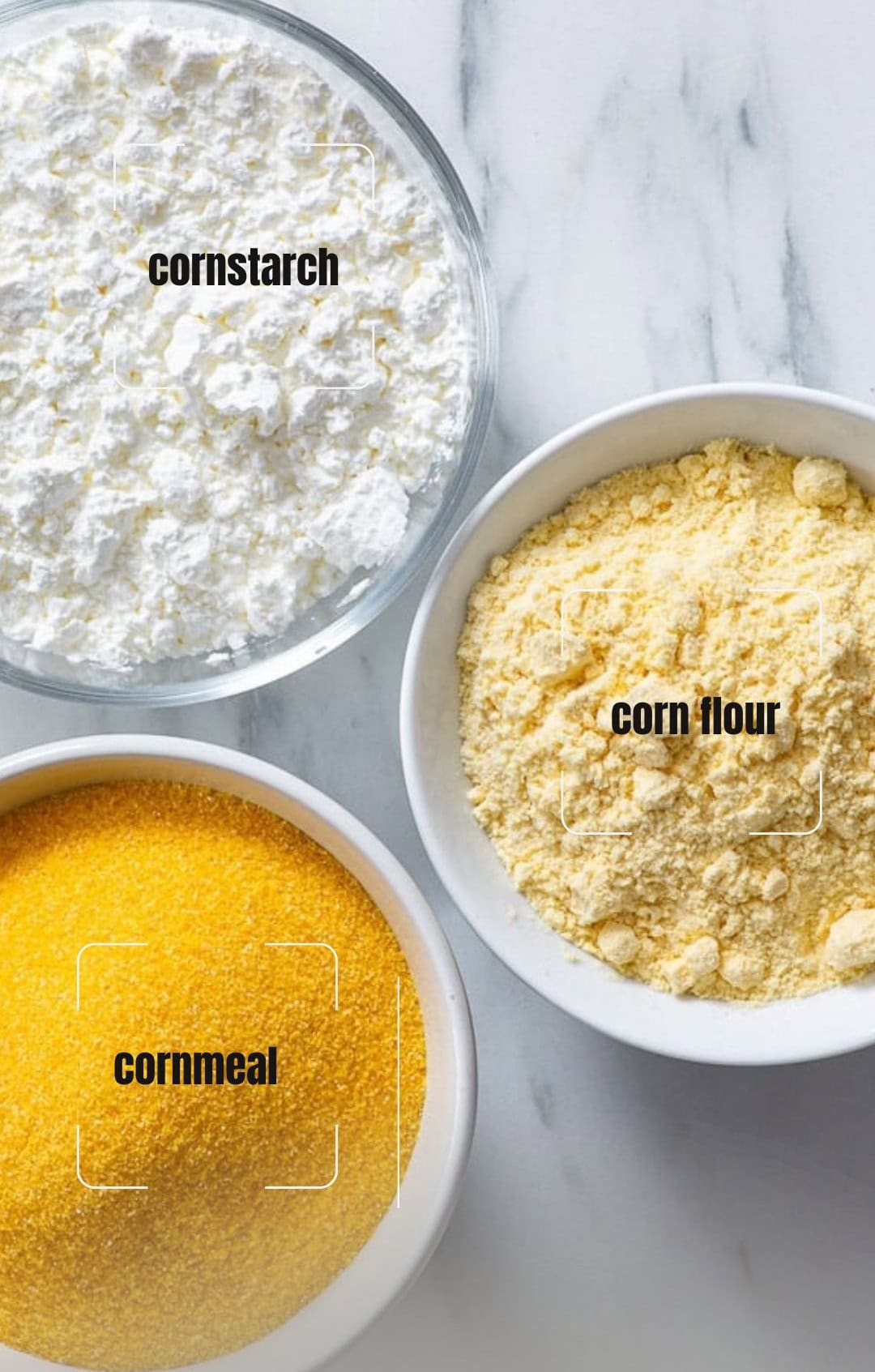Cornmeal and cornstarch are two different ingredients that often get confused. While both are derived from corn, there are distinctions that set the two products apart and can affect the outcome of your dishes. Having a clearer understanding of the differences between cornmeal and cornstarch will help you choose the right one for your recipes.

5 Differences Between Cornmeal and Cornstarch
1. The Part of the Corn It Comes From
A distinction between cornmeal and cornstarch is the part of the corn kernel they are derived from. Corn kernels have three parts: the outer layer called the bran, an inner portion called the germ, and everything in between, which is known as the endosperm. Cornmeal is made from the entire corn kernel that gets dried and ground, while cornstarch is made only from the dried endosperm.
2. Color
Because cornstarch and cornmeal are made from different parts of the kernel, their color is slightly different. Cornmeal is typically a shade of yellow, while cornstarch is usually white.
3. Consistency
The consistency of cornmeal and cornstarch differs. Cornstarch has a very fine, powdery consistency, often looking more like flour than anything else. Cornmeal has a coarse texture containing grains of various sizes and shapes.
Cornstarch is so fine that it is often called corn flour in other countries, namely the United Kingdom. As a result, the words cornstarch and corn flour are occasionally used interchangeably in the United States.
4. Flavor
A notable distinction between cornmeal and cornstarch is the flavor. Cornmeal tastes like corn, and the flavor can range from a slightly sweet to mildly nutty corn flavor, depending on the coarseness and processing. Cornstarch, because it is made only of only the kernel’s endosperm, is neutral in flavor, making it an easy additive to many recipes since it won’t introduce that distinctive corn flavor.
5. Uses
The difference between cornmeal and cornstarch is particularly evident in their uses. Cornmeal is used as a main ingredient in recipes where its coarse texture and corn flavor are desired. It’s perfect for breading when frying, or recipes you want to taste like corn.
Cornmeal Dishes
- Cornbread
- Fried Fish
- Hush puppies
- Tortillas
Cornstarch is often used as a thickening agent in cooking and baking as an alternative to flour. Its powdery texture and neutral flavor thicken recipes without affecting the taste.
Dishes that Use Cornstarch
- Soups
- Sauces
- Gravies
- Puddings
6. Shelf Life
The shelf life of cornmeal and cornstarch is another way the two ingredients differ. Cornstarch, if kept cool and dry, will last indefinitely on your shelf. There is little nutritional value to begin with, and after processing, there is no way for it to go bad.
Cornmeal, on the other hand, contains oil and has a useful shelf life of about one year. After that, it will lose flavor and eventually go rancid.
Can You Switch Cornmeal for Cornstarch?
Swapping cornmeal for cornstarch is never a good idea, as these are two very different ingredients. Making the switch, even if you’re in a bind, will likely ruin both the flavor and consistency of your dish. It’s better to have both on hand so you can always use the one the recipe calls for.


check backlinks of competitor says
I believe you have noted some very interesting details , thankyou for the post.